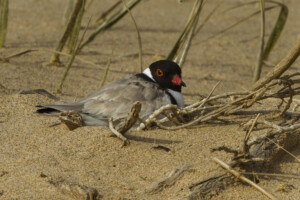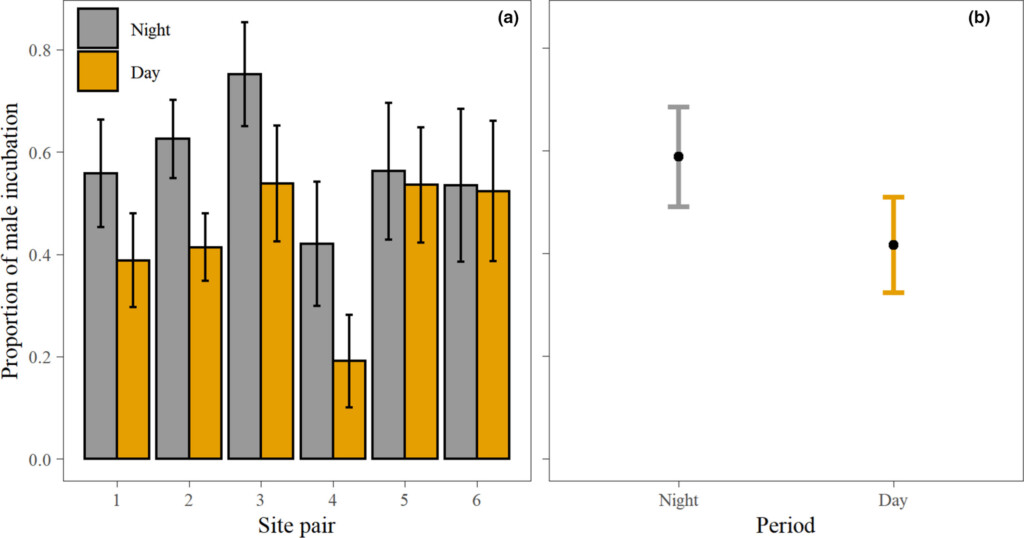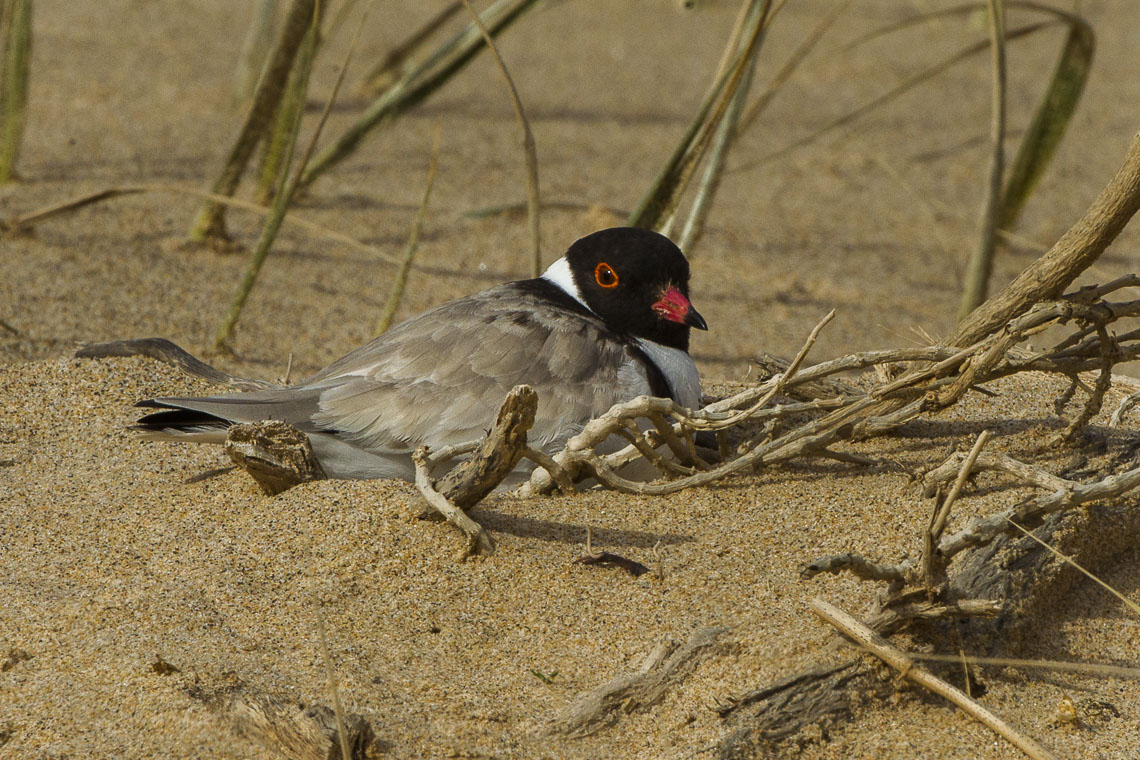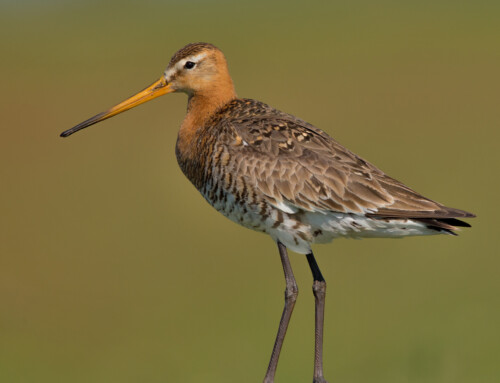
LINKED PAPER
Day–night cycle influences the division of incubation in the Hooded Dotterel (Thinornis cucullatus). Ryeland, J., Magrath, M. J., & Weston, M. A. 2022. IBIS. DOI: 10.1111/ibi.13040. VIEW
When it comes to incubating eggs, males of the Hooded Dotterel (Thinornis cucullatus) prefer the night shift. Although both sexes divide the incubation task equally, males spend more time on the nest after sunset (59% of the time). A team of Australian researchers uncovered this division of labour when they equipped seven nests with an ingenious system (Becker & Wendeln 1997). Both parents carried small transponders which could trigger a data logger under the nest. Whenever a bird was on the nest, the data logger would record whether the male or the female was incubating the eggs. This set-up revealed that males incubated more at night. Now, the main question remains: why?
Territorial defence
From a theoretical perspective, the division of incubating tasks in the Hooded Dotterel doesn’t make sense. In sexually dimorphic species, males benefit from incubating at night (Ekanayake et al. 2015). Their conspicuous plumage could attract predators during the day. Females are usually better camouflaged on the nest. In the Hooded Dotterel, however, males and females look alike (i.e. they are sexually monomorphic). Hence, when it comes to avoiding predation, no sex clearly benefits from sitting on the nest at night. Although both sexes sport the same plumage, males do defend the breeding territory against intruders. It is thus possible that male dotterels guard their territory during day and focus on incubating the eggs at night (Kosztolányi & Székely 2002).

Figure 1. Male Hooded Dotterels spend more time on the nest during the night (grey) than during the day (orange).
Physiological differences
Or perhaps there are subtle differences between the sexes. We just haven’t looked closely enough. Females have spent a lot of energy producing and laying the eggs. To restore their body condition, they might benefit from foraging at night. When the sun has set, there is less disturbance and the birds experience lower predation risks (Wallander 2003). Alternatively, females might be better at thermoregulation than males (Hill et al. 2014). Hooded Dotterels nest on sandy beaches where temperatures can rise to more than 40ºC. Maybe females are more efficient at regulating their heat output to deal with these scorching conditions. At the moment, however, we don’t know. But there are plenty of hypotheses to explore.
References
Becker, P.H. & Wendeln, H. (1997). A new application for transponders in population ecology of the Common Tern. Condor 99: 534– 538. VIEW
Ekanayake, K.B., Weston, M.A., Nimmo, D.G., Maguire, G.S., Endler, J.A. & Küpper, C. (2015). The bright incubate at night: sexual dichromatism and adaptive incubation division in an open-nesting shorebird. Proceedings of the Royal Society B: Biological Sciences 282: 20143026. VIEW
Hill, D.L., Lindström, J., Mccafferty, D.J. & Nager, R.G. (2014). Female but not male Zebra Finches adjust heat output in response to increased incubation demand. Journal of Experimental Biology 217: 1326– 1332. VIEW
Kosztolányi, A. & Székely, T. (2002). Using a transponder system to monitor incubation routines of Snowy Plovers (Charadrius a. alexandrinus). Journal of Field Ornithology 73: 199– 205. VIEW
Wallander, J. (2003). Sex roles during incubation in the Common Ringed Plover. Condor 105: 378– 381. VIEW
Image credits
Top right: Hooded Dotterel (Thinornis cucullatus) | Francesco Veronesi | CC BY-SA 2.0 Wikimedia Commons
Blog posts express the views of the individual author(s) and not those of the BOU.
If you want to write about your research in #theBOUblog, then please see here




